October 2013
Vought
A-7A Corsair II
Vought
F-4U Corsair Mk.1
|
October 2013 |
||
![]()
![]() Selected
WW2 70th Anniversaries this month:
Selected
WW2 70th Anniversaries this month:
Between 2009 and 2015, I have set myself a general modelling theme based on selected 70th Anniversaries from WW2.
|
Chance Vought F-4U Corsair Mk.1
British Delegation, Roosevelt Field, New York, 1943.
Hasegawa, 1/72.
The summer of 1943 saw a step change in British carrier aviation capability as new ships were matched to a new generation of highly capable US aircraft, developed on the back of bitter war experience and incorporating rapid technological development. Perhaps the most capable of these aircraft was the remarkable Chance Vought Corsair. Based around the immensely powerful P&W Double Wasp rotary engine of 2,000 HP, the Corsair featured distinctive inverse gull wings that allowed the most efficient aerodynamic join between wing and fuselage whilst also shortening the length of undercarriage needed to keep the aircraft's huge propeller clear of the deck.
At first, the Corsair's bad-mannered flying characteristics were deemed too difficult to fly from carriers, so the aircraft were delivered to US Marine units to operate from shore bases. In this role they were highly successful, but in the meantime, the British Fleet Air Arm, who were desperate for more capable aircraft, had developed effective tactics for operating the Corsair at sea, including a long sweeping approach pattern that allowed the pilot to see the carrier deck over the Corsair's long nose.
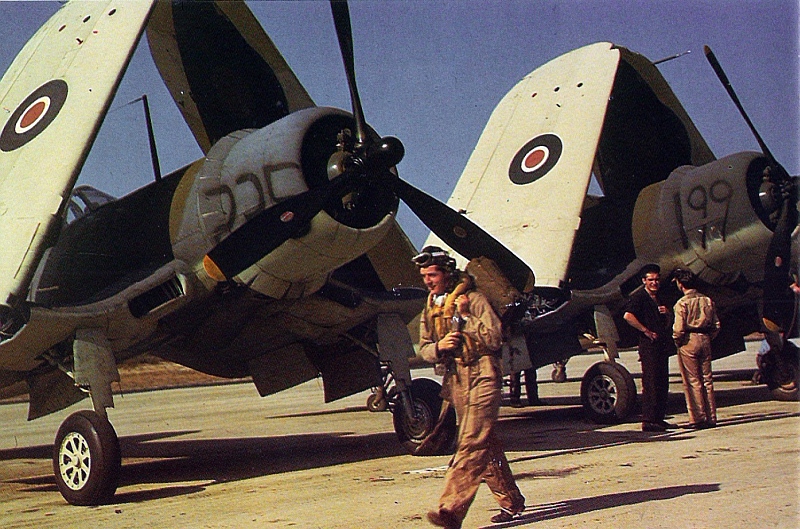
Royal
Navy Vought Corsair Mk. I fighters at Naval Air Station Quonset Point,
Rhode
Island (USA), where Royal Navy pilots were trained on the Corsair,
in 1943.
Corsairs began to be delivered to FAA units in June 1943. Royal Navy Squadrons conducted initial training and work-up in the US at NAS Quonset Point and NAS New Brunswick, before being ferried to the UK by sea. Initial deliveries of Mk.1 Corsairs, with their "birdcage" canopy were quickly replaced by later marks with a blown bubble canopy and trimmed wing-tips to allow their stowage in the cramped hangars of the Royal Navy's carriers.
Hasegawa's WW2 US fighters are generally difficult to beat. Although this one features raised panel lines, it builds beautifully and results in a very pleasing kit. Hasegawa have issued this kit with specific RN markings, but this one is based on an old USMC issue, with decals from the spares box to represent one of the newly delivered British aircraft at its handover from Vought.
The kit is quite a simple build, with good surface and wheel well detail, plus a basic cockpit with decals for the instrument and side panels. One particularly pleasing aspect of this kit is the way Hasegawa have engineered the wing joints, pretty much assuring a perfect fit in all cases.
My Corsair fleet grows! From left - Hobby Boss, Hasegawa and Hasegawa
Link to other WW2 RN aircraft on my RN Props Pages
VA-153 "Blue Tail Flies", USS ORISKANY, Gulf of Tonkin, Vietnam, 1973.
Hasegawa, 1/72.
As combat attrition in Vietnam began to bite, the USN looked to replace A-4 Skyhawk aircraft losses with a new design. To speed acquisition the replacement aircraft had to be based on an existing design, leading Douglas to propose an enlarged Skyhawk, North American an "Super Fury" (one assumes similar to the Super Sabre) and Vought (now owned by Ling Temco) to propose the winning design; a simplified Crusader derivative.
Despite lacking the radar, variable incidence wing and afterburner (supersonic flight was not needed), the Corsair's family resemblance was clear and was mirrored in its very short development cycle and operational success. Capable of carrying an incredible bomb load (more than a WW2 Flying Fortress), Corsairs were also adopted by the USAF, with aircraft of both services seeing combat in Vietnam toward the end of the war and remaining in front-line service with the USN until the end of the first Gulf War in 1991.
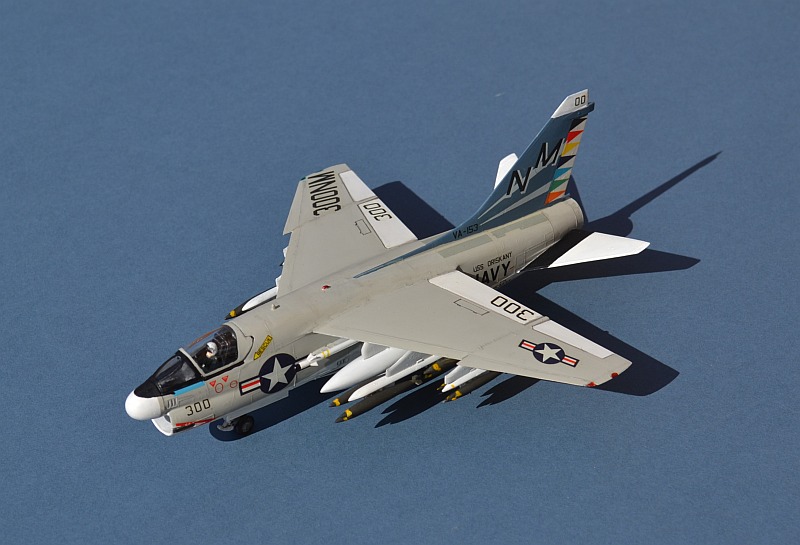
Hasegawa's Corsair kit is even older than their Crusader and dates from the period of collaboration with Frog, whose style it closely matches. Despite a "chunky" feel, it is well engineered and easy to build, but detail is very sparse, particularly around the cockpit (a blob-like seat only) and nose (which ends in a blank wall about 1cm into the intake. A large armament load is included, but again is very crude in detail.
I had a lot of difficulty with the decals on this one as they were very translucent, reluctant to leave the backing paper and split apart when applied.
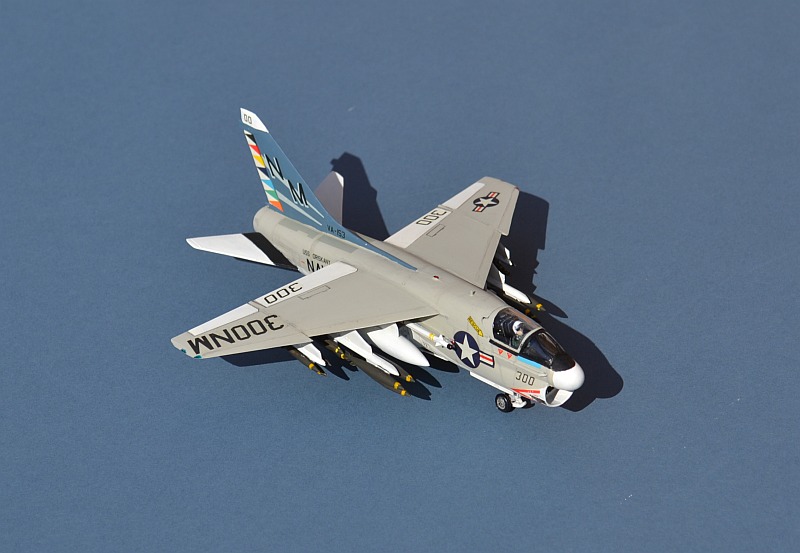
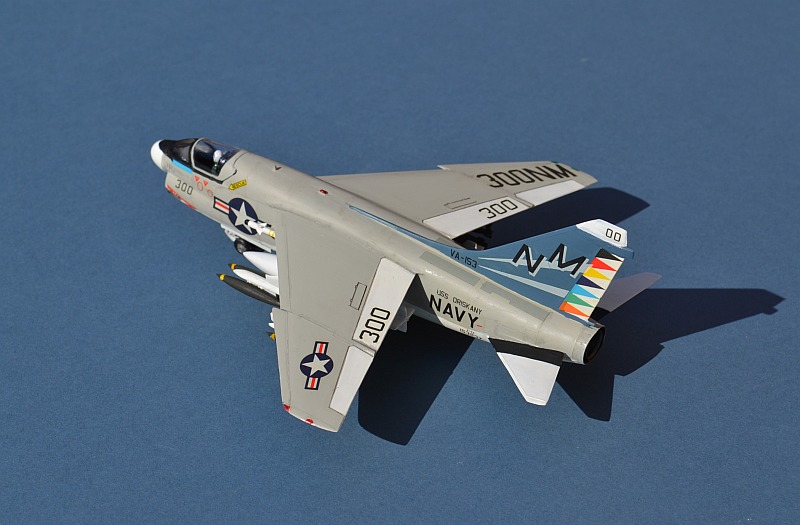
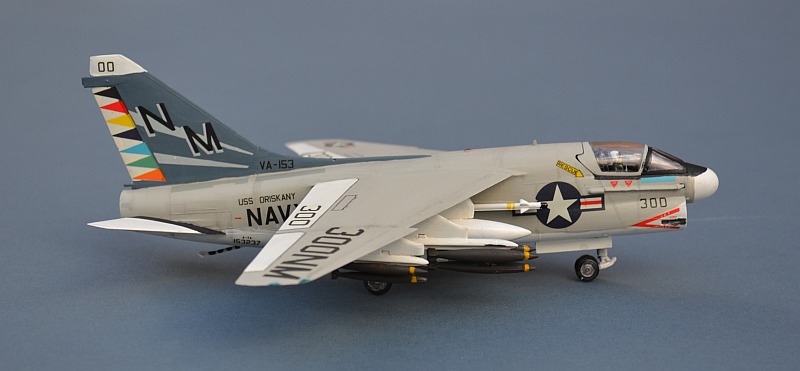
Link to more US Navy Aircraft on my Friends & Allies Pages
Link to previous month Link to Next Month
www.gengriz.co.uk
Background Image: F-4U Corsair at the Fleet Air Arm Museum, Yeovilton